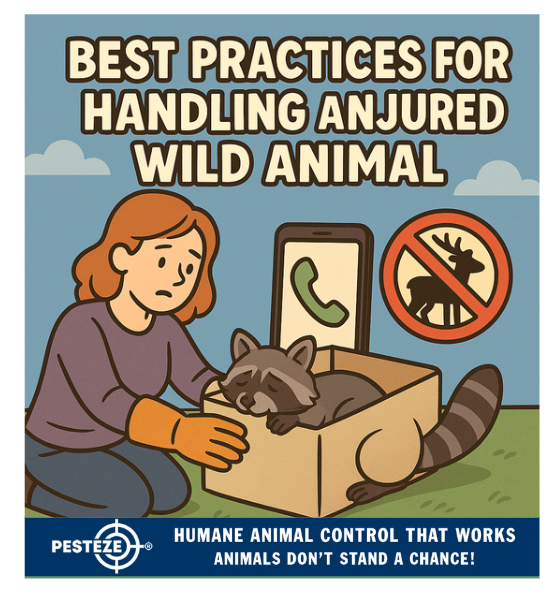BEST PRACTICES FOR HANDLING AN INJURED WILD ANIMAL

BEST PRACTICES FOR HANDLING AN INJURED WILD ANIMAL
SUMMARY
Encountering an injured wild animal can be overwhelming, but your actions can make a difference. This guide explains the safest and most humane steps to take, protecting both you and the animal.
FEATURES
-
Assess from a distance: Observe before acting.
-
Protect yourself: Wear gloves or use barriers.
-
Minimize stress: Keep noise and handling to a minimum.
-
Do not feed or treat: Avoid giving food, water, or medicine.
-
Contain safely: Use a ventilated box or carrier if necessary.
-
Call professionals: Contact wildlife rehabilitators for help.
GUIDE DESCRIPTION
Wild animals are vulnerable when injured, and while it may be tempting to help immediately, the wrong actions can cause more harm than good. Understanding the best practices for handling an injured wild animal ensures humane treatment while keeping you safe.
The first step is to assess the situation from a distance. Watch to determine if the animal is truly injured or temporarily stunned. Some animals, like birds that hit windows, may recover on their own if left undisturbed.
If the animal is clearly hurt, protect yourself first. Injured wildlife may lash out in fear or pain. Always wear gloves, use towels, or other barriers to reduce direct contact. Never attempt to handle large or dangerous animals without expert guidance.
Minimize stress by keeping noise and disturbance low. Injured animals are already under significant stress, and unnecessary handling or loud environments can worsen their condition.
It’s important to remember: do not feed or treat the animal yourself. Human food, water, or medications can be harmful or fatal to wildlife. Even if the animal seems hungry or dehydrated, leave care to trained professionals.
If containment is necessary, use a safe method. Place small animals, such as birds or squirrels, in a ventilated cardboard box lined with a towel. Keep the box in a quiet, warm, and dark place. Avoid pet carriers with wide openings that the animal might injure itself against.
The most critical step is to call professionals. Wildlife rehabilitators, animal control, or local veterinarians can provide the care and expertise needed for recovery. Many regions have hotlines or organizations dedicated to wildlife rescue, so seek their help promptly.
By following these practices—observe first, protect yourself, minimize stress, avoid DIY care, and contact experts—you provide the animal with the best chance of survival and safe return to the wild.
- Saneeth Thota


Comments 0